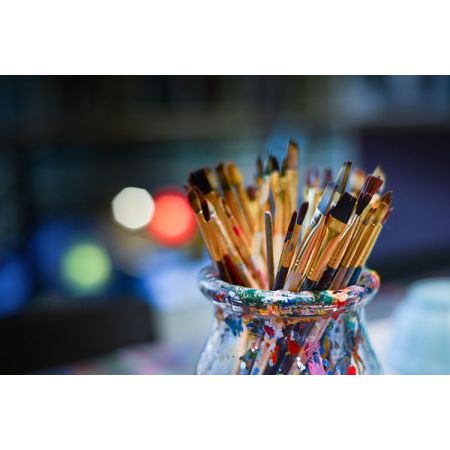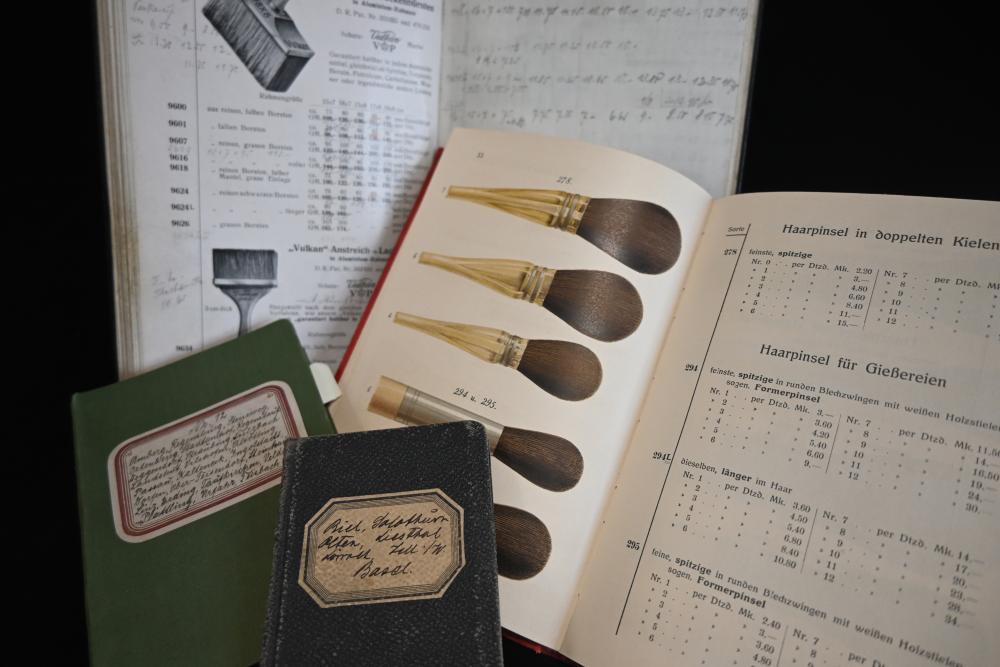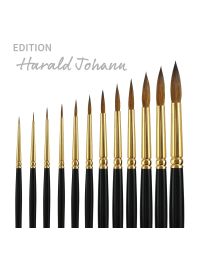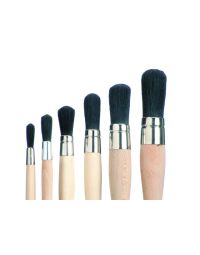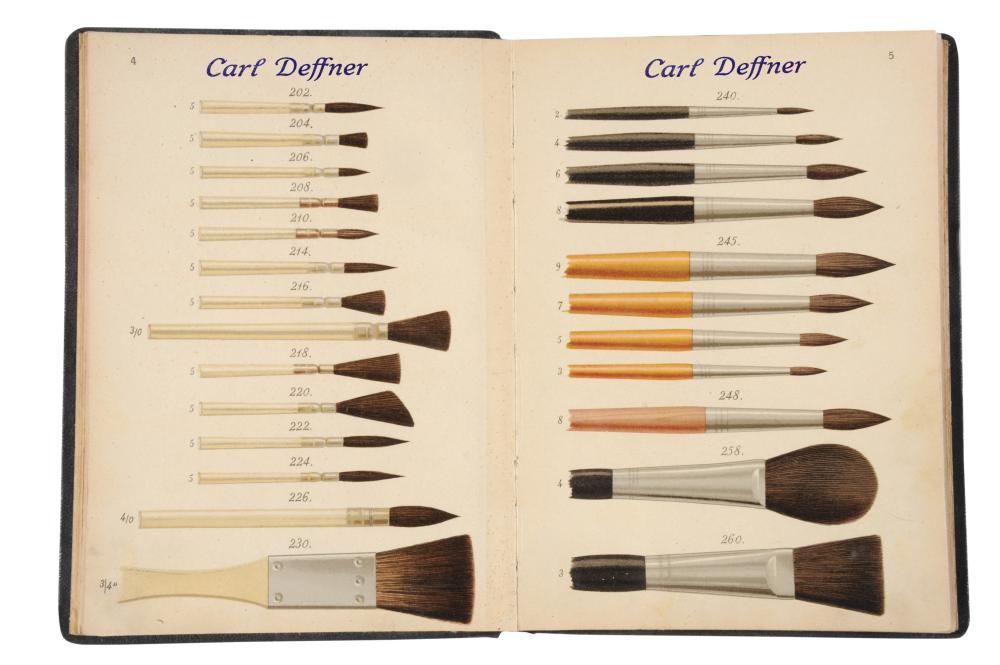 As "products from the very first hour", brushes, along with pigments and raw materials for colour production, have always been particularly important to us. We have been offering a wide range of high-quality brushes for every application for over 140 years, as illustrated by old catalogues from our D&J archive.
As "products from the very first hour", brushes, along with pigments and raw materials for colour production, have always been particularly important to us. We have been offering a wide range of high-quality brushes for every application for over 140 years, as illustrated by old catalogues from our D&J archive.
Brushes have been one of the most important tools for centuries, and not just in handicrafts and fine arts. Depending on the shape of the brush and the type of trim, there are special fields of use and properties, that decisively influence the quality of the work result, such as a paint retouching or a historical coating.
As discovered, we now know that brushes were used to apply colours in addition to fingers, bones and twigs in cave paintings around 20,000 years ago. The first versions of the brushes we know today were made from feathers tied to twigs or animal hair stuck into tubular bones.
Until the 18th century, it was common for artists to make their own brushes. In 1798, the master carpenter Johann Caspar Bühler settled in Bechhofen, produced brushes in the form we know them today – trim material, connecting element (ferrule or cord) and wooden handle - and sold his brushes to painters and craftsmen. He is considered the founder of the fine hair brush craft in Germany. Even today, craftsmanship has hardly lost its importance in the region. There are still companies here that practise this traditional craft in a unique variety of ways.
------
Choosing The Right Brush Shape
With so many different shapes and sizes, it can be difficult to find the right brush for your project. Each brush shape and size has a specific purpose and delivers a different result when used.
Looking at the brush head, two groups can be clearly distinguished based on the shape - flat brushes and round brushes. If the trim is fixed in a ring or quill, the result is a round shape; with flat clamps and metal sheets, the trim is moulded flat accordingly. Special shapes, such as fan and forked brushes or birch mottlers, are based on these two basic shapes and are used depending on the painting technique or paint to imitate a wide variety of effects, e.g. marbling or wood grain.
Flat brushes are particularly suitable for working on larger, flat surfaces and for varnishing, such as working with linseed oil paints. Fine lines can be drawn with the edge of the brush.
Round brushes are ideal for working on smaller and curved surfaces. A cork disc, which has been incorporated into the paint chamber of ring brushes (varnishing and glazing brushes), and a filament pre-tape enable a high paint retention capacity and characterise a high-quality brush. The round handle supports a clean paint application, as the brush can be turned evenly in the hand.
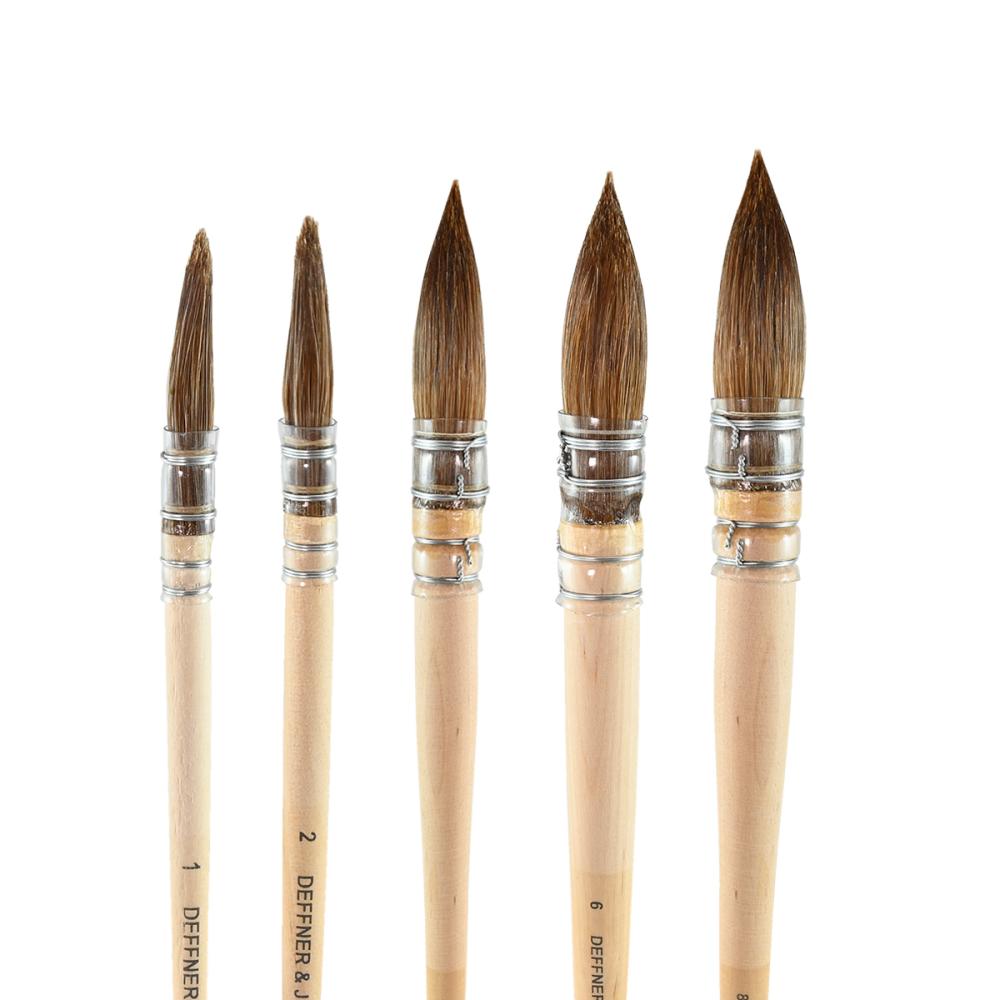 A Little Trim Guide
A Little Trim Guide
An additional categorisation can be made according to the brush trim. Pure natural hair and bristles are used for traditionally manufactured brushes.
Natural Hair
Kolinsky Sable Hair is the best quality hair for making artists' brushes, e.g. retouching, oil and watercolour brushes, thanks to its extremely fine tip, very good resilience and form stability. The bulbous curvature in the centre of the hair ensures very high paint absorption and retention.
For gilding brushes, porcelain and ceramic brushes, Squirrel Hair from the tail of the Canadian and Russian squirrel is used. The hair is very supple and absorbs a lot of water, which is ideal for working with water-based colour systems.
Ox Hair on the other hand, can absorb a lot of colour, is strong and elastic at the same time and is therefore very suitable for oil paint paintbrushes. The light-coloured, brown and black hair is taken from the ears of certain cattle. White ox hair is finer and therefore used for pencil and poster brushes.
The high-quality Goat Hair used for our brushes comes from Asia and is mainly used for cleaning brushes, book brushes and special ceramic painting brushes.
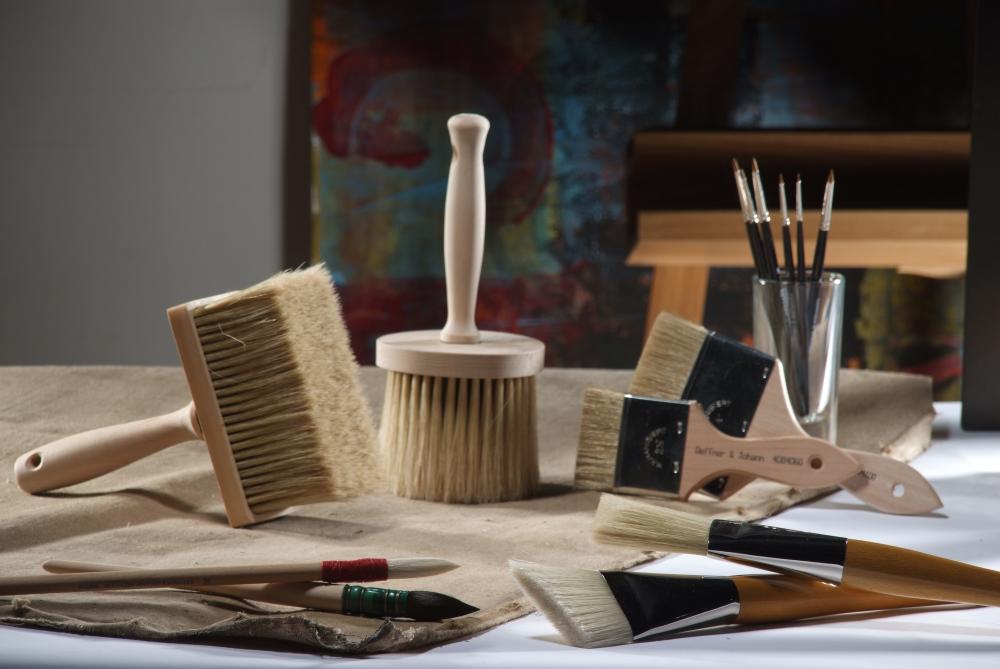 Bristle
Bristle
The particularly soft and durable Wild Boar Bristle is ideal for painting lime.
China Bristle or Chungking Bristle comes from pigs from the Chunking region in China. Long, strong bristles with split ends protect the animals from the harsh climate; natural conditions and age determine the quality and characteristics of the bristle. The properties of this natural bristle – high stability, robustness, flexibility and very good colour capacity – make it an excellent choice for high-quality brushes. Brushes with pure China bristle are particularly suitable for even linseed oil coats and for applying varnishes and lacquers.
Synthetic Fibre
In response to growing requirements from different applications and the dwindling availability of high-quality natural bristles, premium synthetic fibres are increasingly being considered as an alternative to natural hair and reaching the qualities of natural animal hair.
In addition to the established Toray Fibre, a particularly fine and tough polyamide fibre with high resilience and good form stability, there are also specially developed synthetic fibres and Synthetic Blends, which are high-quality alternatives to natural materials and combine their properties with excellent durability.
Brushes with synthetic fibres are versatile, e.g. for oil and acrylic painting, as watercolour brushes or for retouching work.
Brush Cleaning and Care
The correct care and cleaning of brushes is essential for their lifespan and painting quality. A natural hair brush will improve over time if treated properly - the hair and bristles become smoother and adapt to your own style, allowing you to work well and evenly. A brush can remain fully functional for a long time, sometimes even for an entire "working life".
Even high-quality brushes can lose some hair at first. Paint on a test surface with a new brush before actually use.
During and after work, the brush should not dry out or dry up without cleaning; however, brushes can be kept in airtight bags during short breaks. Brushes should be placed down during work without compressing the trim. Special brush rests are ideal for this.
For brush cleaning, the cleaning medium is selected according to the paint and trim used. First remove the excess paint or paint residue from the brush. Water-based paints can simply be washed out thoroughly with a brush cleaner or soap and warm water; linseed oil or olive soap is recommended for oil or synthetic resin colours. To avoid degreasing the bristles, the brush should not be left in the cleaner. Special cleaning agents, e.g. universal thinner, synthetic resin thinner or nitro thinner, may be necessary for certain paints, such as nitro lacquers.
Always clean all parts of the brush. A soiled ferrule can lead to a bad painting result.
Before drying, the rinsed brush should be spread out and shaped. The brush dries most gently when it is hung upside down. This allows any paint residue to run downwards and not collect in the area between the ferrule and the bristles. Colour that dries in front of the ferrule can push the single bristles or hairs apart.
Brushes should always be fully dry before the next use.
Brush bags, mats and quivers as well as various material cases are suitable for storing brushes. To protect the bristles and hair, a protective cap can also be placed over the brush. Especially if many brushes are stored in a box or similar, the caps help to protect the brush heads and keep them in shape.
------
In the past as well as today, the materials used are of decisive importance for the quality of the brushes in our range, in addition to precise and professional workmanship. Some of our relationships with brush manufacturers in the Franconian region have been established for over 100 years.
In this cooperation, we combine tradition and quality standards in material selection and production with innovation in the development of new, synthetic alternatives. For example, high-quality synthetic hair and bristles have been developed for vegan brushes, which are now well established in studios.
Discover our range of brushes, from retouching and watercolour brushes to oil painting brushes, gilding brushes, varnishing, priming and lacquering brushes, Japanese brushes and special brushes right here in the D&J online shop.

